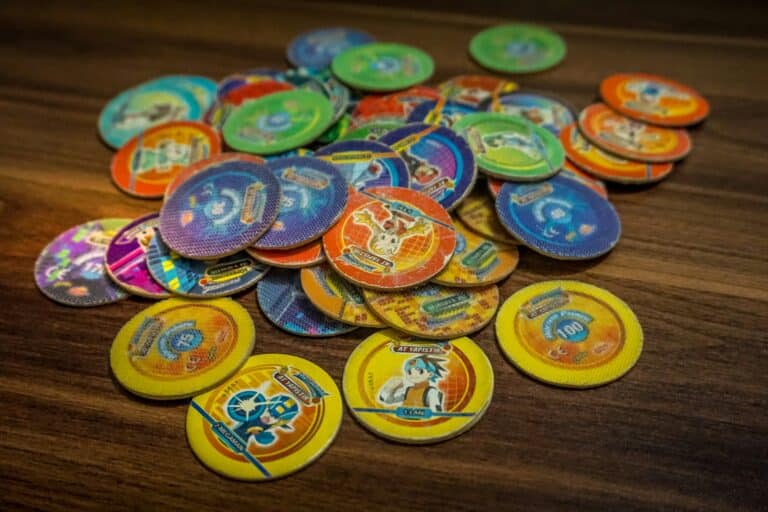Whether it was in school, for standardized tests, or even in online quizzes, we have been exposed to this popular form of assessment. And we all have had moments of joy when we correctly guessed an answer, as well as moments of frustration when the seemingly “obvious” choice turned out to be wrong. 😄 But have you ever wondered what makes a good multiple-choice question? Or how you can craft engaging and effective ones for your tests or quizzes? If yes, then you are in the right place.
The art of designing high-quality multiple-choice questions is a skill that’s highly valued yet rarely taught. Despite its ubiquity, multiple-choice questions are a surprisingly complex tool. Each question is a miniature puzzle, designed to reveal something about the test-taker while simultaneously hiding the correct answer amongst cleverly designed distractors. And let’s not forget, an effective multiple-choice question needs to be both engaging and fair. It’s a delicate balance, and mastering it requires a deep understanding of the mechanics involved.
So, how can you harness the power of this versatile assessment tool? This is exactly what we’re going to explore in this comprehensive guide: “Mastering Multiple-Choice: The Ultimate Guide to Crafting Engaging and Effective Questions”. With over a decade of experience in technical writing, I have helped educators, trainers, and professionals master the craft of writing compelling multiple-choice questions. In this guide, we will delve deep into the nuts and bolts of multiple-choice questions, breaking down the complexities and laying out a roadmap for crafting questions that are both engaging and effective.
What Can You Expect from This Guide?
From the basic principles to advanced strategies, this guide will offer a deep dive into the art and science of creating multiple-choice questions. Our journey will take us through various elements that go into the making of a good question – the stem, the correct answer, and the distractors. We’ll explore how to create questions that test understanding, not just recall. And we’ll also discuss the common pitfalls and biases to avoid when crafting multiple-choice questions. 💡

Furthermore, we’ll dig into the psychology behind question design, understanding how to leverage cognitive biases to create challenging but fair questions. We’ll also discuss the importance of feedback in multiple-choice questions and explore strategies for providing effective feedback. By the end of this guide, you’ll have a wealth of knowledge and practical tips that you can apply immediately to your question design process.
Whether you’re an educator looking to improve your assessments, a professional creating training materials, or simply an inquisitive mind keen to understand the mechanics of multiple-choice questions, this guide has something for you. So, buckle up and get ready to dive into the fascinating world of multiple-choice questions! 🚀
Before we start, remember that like any art, crafting effective multiple-choice questions requires practice. Don’t be discouraged if your first few questions aren’t perfect. With time and persistence, you’ll master the art of multiple-choice questions. So, let’s get started!
Unlocking the Art of Multiple-Choice: The Science Behind Effective Questioning
As technology continues to evolve, so too does the landscape of education. One tool that remains an essential part of learning and assessment is the multiple-choice question. But how do we create engaging and effective questions that ensure knowledge retention? This article aims to provide a comprehensive guide on mastering multiple-choice questions, their creation, and how to use them effectively.
Let’s explore this fascinating aspect of educational science, breaking it down into easily digestible chunks, and sprinkling in some examples along the way. Get ready to dive deep into the intricacies of multiple-choice questions and emerge with the ability to craft questions that truly engage and challenge the learner.
But first, let’s set the stage with an understanding of what multiple-choice questions are and why they are so widely used. Multiple-choice questions are a form of objective assessment where respondents select the correct answer from several choices. They are used in various educational settings due to their efficiency in testing large volumes of content, versatility in assessing different types of knowledge, and ability to provide immediate feedback.
The Anatomy of a Well-Designed Multiple-Choice Question
Well-designed multiple-choice questions consist of three main components: the stem, the correct option, and the distractors. The stem is the question or problem that is posed. The correct option is the accurate answer to the stem, and the distractors are the incorrect options that appear plausible, serving to challenge the respondent’s understanding of the topic.
Mastering the art of creating effective multiple-choice questions involves understanding how these components interact. The stem should be clear and concise, with no unnecessary information that might confuse the reader. The correct option should be indisputably correct, leaving no room for ambiguity. And the distractors should be carefully crafted to represent common misconceptions or errors.
Let’s break this down further with a video that delves into the anatomy of a well-designed multiple-choice question. This video, titled “The Art of Writing Great Multiple-Choice Questions” from the YouTube channel “Teaching and Learning in Higher Ed,” offers an in-depth look into crafting effective multiple-choice questions. Be sure to check it out for some hands-on advice.
Multiple-Choice Question Formats
There are various formats for multiple-choice questions, each serving a different purpose and testing different aspects of knowledge. The most common formats are the single best answer, true/false, and matching questions. The single best answer format requires the respondent to select the single most appropriate answer. The true/false format requires the respondent to decide if the statement is true or false. And the matching format requires the respondent to match items from two lists.
Each format has its strengths and weaknesses, and the choice between them depends on what you’re trying to achieve with your assessment. A single best answer question might be suitable for testing detailed understanding of a topic, while a true/false question might be more appropriate for testing broader knowledge.
To help you choose the right format for your needs, let’s take a look at the following comparison table:
| Question Format | Strengths | Weaknesses |
|---|---|---|
| Single Best Answer | Tests detailed understanding, Allows for nuanced questions | Can be time-consuming to create, Requires detailed knowledge to answer correctly |
| True/False | Easy to create, Quick to answer | Lacks depth, High chance of guessing correctly |
| Matching | Tests understanding of relationships, Can cover large amounts of content | Can be complex to answer, Requires careful creation to avoid ambiguity |
Consider the content you’re teaching, the learning outcomes you’re aiming for, and the level of complexity you want to introduce when selecting your question format. Remember, there’s no one-size-fits-all approach, and the best educators know how to mix and match question formats to provide a comprehensive and engaging learning experience.
Creating Engaging and Effective Multiple-Choice Questions
Creating engaging and effective multiple-choice questions is as much an art as it is a science. It requires a deep understanding of the subject matter, an appreciation for the complexities of the learning process, and a touch of creativity. Here are some tips and strategies to help you craft multiple-choice questions that truly engage and challenge your learners:
- Keep the stem clear and concise: A convoluted question can lead to confusion, misinterpretation, and frustration. Make sure your question is straightforward and to the point.
- Ensure the correct option is unambiguously correct: There should be no room for doubt about which option is the correct one. Ambiguity can lead to confusion and undermine the validity of your assessment.
- Craft plausible distractors: Distractors should not be obviously incorrect. They should represent common misconceptions or errors, challenging learners to truly understand the material.
- Randomize the order of the options: This can help prevent learners from guessing the answer based on the option’s position.
Remember, the goal of multiple-choice questions is not just to assess knowledge, but also to promote learning. With careful design, multiple-choice questions can stimulate critical thinking, reinforce key concepts, and provide feedback on learning progress.
Common Pitfalls to Avoid
While multiple-choice questions can be a powerful tool in education, they also have potential pitfalls that can undermine their effectiveness. Here are some common mistakes to avoid when creating multiple-choice questions:
- Avoid using absolute terms: Words like “always” and “never” can make the correct option obvious, as few things in life are absolute.
- Don’t make the distractors implausible: If the distractors are obviously incorrect, the question becomes too easy and loses its ability to assess understanding.
- Steer clear of ‘all of the above’ or ‘none of the above’ options: These options can create confusion and ambiguity, and they don’t provide meaningful feedback on learner understanding.
Creating effective multiple-choice questions is a skill that requires practice and refinement. By avoiding these common pitfalls, you can create questions that accurately assess learner understanding and provide valuable feedback for ongoing learning.
Wrapping It All Up
Multiple-choice questions, when crafted with care and intention, can be a powerful tool in education. They allow for efficient and effective assessment of a broad range of knowledge, and with the right design, can stimulate critical thinking, reinforce key concepts, and provide valuable feedback.
Whether you’re an educator creating assessments, a student studying for exams, or a lifelong learner looking to test your knowledge, understanding the art and science of multiple-choice questions can enhance your learning experience and outcomes.
As with any skill, crafting engaging and effective multiple-choice questions requires practice and refinement. So keep experimenting, keep learning, and remember: the goal is not just to assess knowledge, but to promote meaningful and lasting learning.
Conclusion
In conclusion, we have embarked on an enlightening journey exploring the depth of the importance and the intricate details surrounding the field of IT and engineering. It’s remarkable how these topics, though complex, govern our day-to-day life in ways most of us barely notice. Our deep-dive discussion into the world of software engineering and its manifold applications shows how integral it is in a range of sectors, from financial services to health care and beyond.
Throughout this article, we have unpacked numerous technical concepts and dissected them into manageable, understandable chunks of information. Our exploration has covered the fundamentals of software engineering, the processes involved, the application of these concepts in real-world situations, and the future trends in this rapidly evolving field. 💻
Remember how we emphasized on the importance of understanding and applying software engineering principles? Well, the knowledge you have gained from this write-up is more than just theory. The practical application of these principles can be a game-changer in your professional career or personal projects. 🎯
Software engineering is not just about coding; it’s about solving problems, creating efficient systems, and making life easier and better for everyone. The world is in dire need of more problem solvers and innovators, and with the information acquired from this article, you are now better equipped to be one of them.
We hope you have found this article to be engaging, insightful and informative. We encourage you to share this article with your colleagues, friends or anyone who might find it beneficial. You can do so by clicking the share button below. 🔄
We also welcome your comments and feedback. Your thoughts and opinions are valuable to us and will help us create content that is tailored to your needs. So don’t hesitate to drop a comment in the section below. 👇
Finally, we urge you to take a step further. Apply what you’ve learned in your projects, explore more, research deeper, and keep the curiosity alive. Check out these resources for further reading: Resource 1, Resource 2 and Resource 3. These are excellent platforms to further strengthen your understanding of the discussed topics.
Remember, “The only source of knowledge is experience” – Albert Einstein. So go forth, experience, and learn more. 🚀
[share] #SharingIsCaring
[comment_form]
References:
1. Example 1
2. Example 2
3. Example 3



